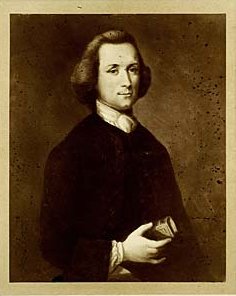Good morning, Whitewater.
A new month begins, with a mostly sunny day, a high of eighty-one, and a forty percent chance of afternoon showers. Sunrise is 5:46 AM and sunset 8:16 PM. The moon is a waxing crescent with twenty-seven percent of its visible disk illuminated.

On this month in 1774, Joseph Priestly discovers oxygen (with other scientists having a role in its discovery, also):
In August 1774 he isolated an “air” that appeared to be completely new, but he did not have an opportunity to pursue the matter because he was about to tour Europe with Shelburne. While in Paris, however, Priestley managed to replicate the experiment for others, including French chemist Antoine Lavoisier. After returning to Britain in January 1775, he continued his experiments and discovered “vitriolic acid air” (sulphur dioxide, SO2).
In March he wrote to several people regarding the new “air” that he had discovered in August. One of these letters was read aloud to the Royal Society, and a paper outlining the discovery, titled “An Account of further Discoveries in Air”, was published in the Society’s journal Philosophical Transactions.[99] Priestley called the new substance “dephlogisticated air”, which he made in the famous experiment by focusing the sun’s rays on a sample of mercuric oxide. He first tested it on mice, who surprised him by surviving quite a while entrapped with the air, and then on himself, writing that it was “five or six times better than common air for the purpose of respiration, inflammation, and, I believe, every other use of common atmospherical air”.[100] He had discovered oxygen gas (O2).
Priestley assembled his oxygen paper and several others into a second volume of Experiments and Observations on Air, published in 1776. He did not emphasise his discovery of “dephlogisticated air” (leaving it to Part III of the volume) but instead argued in the preface how important such discoveries were to rational religion. His paper narrated the discovery chronologically, relating the long delays between experiments and his initial puzzlements; thus, it is difficult to determine when exactly Priestley “discovered” oxygen.[101] Such dating is significant as both Lavoisier and Swedish pharmacist Carl Wilhelm Scheele have strong claims to the discovery of oxygen as well, Scheele having been the first to isolate the gas (although he published after Priestley) and Lavoisier having been the first to describe it as purified “air itself entire without alteration” (that is, the first to explain oxygen without phlogiston theory).[102]
In his paper “Observations on Respiration and the Use of the Blood”, Priestley was the first to suggest a connection between blood and air, although he did so using phlogiston theory. In typical Priestley fashion, he prefaced the paper with a history of the study of respiration. A year later, clearly influenced by Priestley, Lavoisier was also discussing respiration at the Académie des sciences. Lavoisier’s work began the long train of discovery that produced papers on oxygen respiration and culminated in the overthrow of phlogiston theory and the establishment of modern chemistry.[103]
Google-a-Day presents a history question:
At the time of signing, what was the title of the man who is the first of the two names in the name of the 1901 treaty that nullified the Clayton-Bulwer Treaty?
